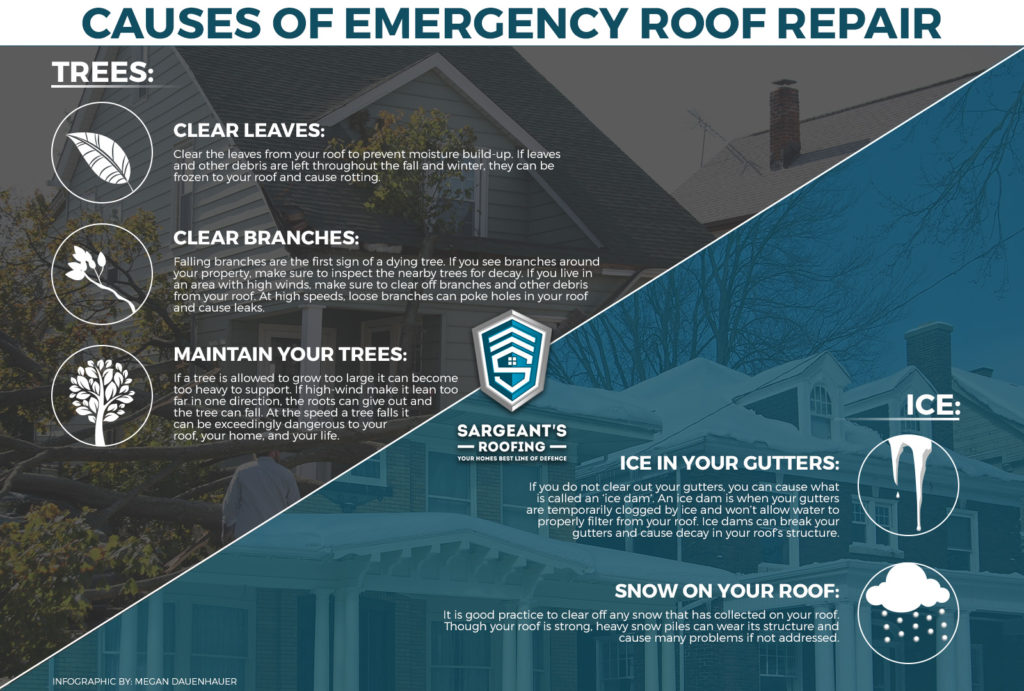How Weather Condition Impacts Your Roof: A Newbie'S Guide
How Weather Condition Impacts Your Roof: A Newbie'S Guide
Blog Article
Created By-Barrera Moser
When it concerns your roof, the weather plays a vital function in its overall health and life expectancy. You might not recognize exactly how rain can lead to leaks or just how hefty snow can emphasize the framework. Also the sunlight's ruthless rays can degrade your roofing products over time. It's important to recognize these influences, however what can you do to shield your roof covering from the elements? Checking out upkeep approaches and product selections could be key to guaranteeing your roofing system stands solid versus whatever Mother earth throws its means.
Impacts of Rain on Roof covering
Rain can be a quiet enemy to your roof covering, causing both prompt and long-term damages. When water permeates into fractures or voids, it can lead to leaks, which may disappoint up right now. You might notice a discolor on your ceiling, but by then, the wetness can have already jeopardized your roof covering framework.
Over time, regular direct exposure to rainfall can deteriorate roofing products. Shingles might warp, crinkle, or perhaps break down, leaving your home at risk to more water breach. Mold and mold flourish in wet conditions, which can endanger your interior air high quality and lead to health issues.
Standing water on your roof can additionally create severe issues. It adds unneeded weight, enhancing the danger of architectural failing. Plus, it can increase the wear and tear of your roof covering products, making substitutes a lot more regular and expensive.
To secure your roof, ensure your gutters are tidy and operating properly to draw away rainwater away. Routine inspections can help you catch possible problems prior to they intensify.
Taking these steps currently can save you time and money over time, keeping your home risk-free and dry.
Influence of Snow and Ice
When wintertime arrives, snow and ice can present considerable hazards to your roofing system, similar to rain. Gathered snow can be fairly hefty, and if it does not slide off, it can produce a hazardous lots that your roofing mightn't have the ability to sustain. This pressure can lead to sagging, leakages, or even architectural failing.
Ice can additionally trigger issues, specifically with ice dams. When snow on your roof covering thaws, it can move down and refreeze at the eaves, developing a dam that prevents proper water drainage. Water after that supports under tiles, leading to leaks and water damages inside your home.
To safeguard your roof covering, it's necessary to maintain seamless gutters clear of particles, allowing for appropriate drainage. On a regular basis evaluating your roofing for indicators of wear and damage can aid catch concerns early.
If gutter companies in san antonio notice a significant quantity of snow, consider working with a specialist to remove it securely. Remember, it's far better to be proactive regarding snow and ice than to deal with pricey repair services later. Taking these actions can assist ensure your roofing endures the winter months without major problems.
Sunshine and Temperature Challenges
While you could enjoy warm days, prolonged direct exposure to sunlight and severe temperature levels can be detrimental to your roof covering. UV rays can break down roof covering materials gradually, leading to warping, fracturing, or fading. If your roofing system's roof shingles are made from asphalt, they might end up being breakable under intense heat, making them a lot more vulnerable to damages.
In addition, heats can increase the threat of thermal development. As materials expand during the warmth of the day and contract during the night, this continuous cycle can create anxiety on your roofing system, possibly causing leaks or other structural issues.
You may also observe boosted energy prices as your cooling system functions tougher to battle warm buildup in your attic.
It's essential to pick roofing materials that can withstand your regional environment's temperature changes. san antonio roofers -colored or reflective roofing can help reduce heat absorption, while correct ventilation in your attic room can preserve a balanced temperature level.
Routine inspections and upkeep can additionally catch issues early, guaranteeing your roofing system stays in optimal problem. By remaining proactive, you'll secure your investment and expand your roof covering's life-span despite the challenges presented by sunlight and temperature extremes.
Final thought
Finally, recognizing just how weather affects your roof covering is critical for maintaining its integrity and longevity. Rain can result in leakages, snow and ice can produce hefty loads, and prolonged sun exposure can trigger materials to break down. By remaining proactive with regular upkeep and choosing the appropriate materials, you can protect your roof from the elements. Remember, a well-kept roofing system not just enhances your home's value but also keeps you safe and comfortable for years ahead.
